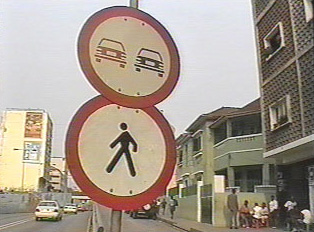LangMedia
Portuguese in Angola
Cars and Driving

Given that foreigners continue to migrate to Angola and the fact that many residents fled from provinces to the cities during the civil war, traffic in Angolan cities tends to be very congested. The capital city, Luanda, was built to accommodate two million people, yet now houses four million, and a large percentage of that population owns cars.
The cars one finds in the city vary from old and imported cars to state-of-the-art models that arrive in Angola even before being available in the United States. In an attempt to curb pollution, mayors in major cities are attempting to put a limit on the age of imported cars.
In the farm villages, there are fewer motorized vehicles and a greater number of trucks and vans. Another kind of vehicle is hand-constructed by individuals and runs without a motor. It has brakes in order to control downhill speed, and when going uphill, the passengers get out and push. One also sees many motorcycles in both the city and the country.
Parking is usually accessible in the city, although sometimes one has to search a bit. There is a parking lane on either side of the street for random parking. Businesses, supermarkets and many apartment buildings supply lots or designated places for their customers or tenants. There are many gas stations in the cities, but in the country they may be harder to find. One should never let the gas level get too low. Gas stations in Angola are never self-serve; gas is pumped by an attendant.
Rush hours in the city take place during the mid-morning, from noon to 1:30 p.m., and again at around 6:00 p.m., when the already difficult traffic tends to worsen. Angolans have become increasingly impatient drivers as the traffic situation has worsened over the years, and often, unexpected things, like a driver using the sidewalk to pass another car, will occur.
